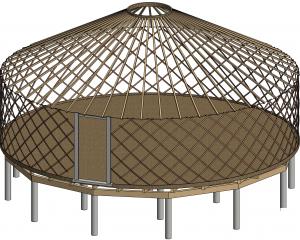The focus of the postponed aerial 1080 poisoning operation around Makarora appears to have shifted, from rats and mice to possums.
In emailed responses to Otago Daily Times questions this week, Department of Conservation spokeswoman Annette Grieve said the operation would primarily target possums ''as rodent populations are likely to have crashed naturally through winter''.
Asked for further explanation, Ms Grieve said no-one was available at short notice to answer questions.
While possums are predators of native birds, publicity at the launch of Doc's ''battle for our birds'' programme, in January 2014, was heavily focused on the effects of rodents and stoats.
Conservation Minister Dr Nick Smith said the beech seed crop would ''trigger a plague of an additional 30 million rats and tens of thousands of stoats''.
The Makarora part of the programme was initially scheduled for late last year. In May, in readiness for an aerial drop of toxic cereal bait, non-toxic bait was spread over 23,000ha around Makarora.
However, on Monday Doc announced it was postponing the drop of toxic bait until spring or early summer, because of snowfalls.
That led anti-1080 campaigner Carol Sawyer to suggest the pre-feed had been a waste of money.
Ms Grieve said
Makarora operational costs, including the pre-feed, amounted to $182,795 so far.
Doc would, she said, assess the need for an additional pre-feed when a decision was made about timing for the pest control operation in spring.
''However, because the aerial 1080 operation will primarily target possums, as rodent populations are likely to have crashed naturally through winter, pre-feed is not as critical to ensure the success of the operation as possums are not as inherently bait shy as rodents.''
Mr Sawyer also claimed toxic cereal bait prepared for the operation would have to be dumped because it would be past its ''use by'' date by spring.
She quoted from National Pest Control Agencies guidelines stating cereal baits could become rancid and should be stored for ''not longer than three months''.
Ms Grieve said any bait that aged significantly ''beyond the expected time period'' was tested for toxicity before being used to ensure it remained effective to control pests.
She did not provide an explanation of what would be done with toxic bait not fit for purpose.











